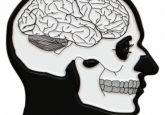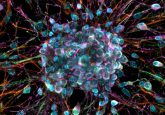On edge in safe surroundings? Blame it on the brain

Using a virtual reality game, researchers discover that the brains of individuals with anxiety associate a known safe area with a threat.
A team from the Del Monte Institute for Neuroscience at the University of Rochester (NY, USA), have used a virtual reality game to examine how the brain is affected by anxiety. They observed that whilst those with anxiety know they are in a safe area, their brain behaves as if they are in danger.
Not much is known about how patients with anxiety disorders learn about threat within an environment and the neural mechanisms at play. To find out, the researchers recruited volunteers with either generalized or social anxiety and healthy controls, to navigate a virtual reality environment.
In the virtual environment, the volunteers walk around a meadow picking flowers. Half of the flowers have a bee inside that will sting, in the form of an electric shock, while the other half are safe. Each flower looks identical, so the volunteers rely on landmarks such as mountains and beehives to work out where they are. While playing the game, their brain activity is measured via fMRI.
How the volunteers’ brains reacted, all depended on whether they had an anxiety disorder. Interestingly, although all volunteers could distinguish between safe and dangerous areas, those with anxiety had increased insula and dorsomedial prefrontal cortex activation, suggesting that their brains were associating a known safe area to a threat.
 A rat’s guide to virtual reality
A rat’s guide to virtual reality
Testing rats in a virtual reality maze uncovers a specific neural mechanism behind navigation, offering insight into the pathogenesis of neurodegenerative diseases such as Alzheimer’s.
“These findings tell us that anxiety disorders might be more than a lack of awareness of the environment or ignorance of safety, but rather that individuals suffering from an anxiety disorder cannot control their feelings and behavior even if they wanted to,” explained Benjamin Suarez-Jimenez, first author of the study.
What’s more, the team did not find any clear differences between the two groups for other indicators of anxiety, such as sweat response. Only the brain scans revealed a difference between those with and without clinical anxiety.
“This is the first time we’ve looked at discrimination learning in this way. We know what brain areas to look at, but this is the first time we show this concert of activity in such a complex ‘real-world-like’ environment,” commented Suarez-Jimenez. “These findings point towards the need for treatments that focus on helping patients take back control of their body.”
The researchers acknowledge a number of factors that could have affected their results, such as lack of insight into the volunteers’ video game experience. Nevertheless, this study helps towards building up a better understanding of the development and maintenance of anxiety disorders.
Following these latest results, Suarez-Jimenez and his colleagues are interested in finding out whether similar observations are seen for other disorders.
“For next steps [sic] in this recent research, we still need to clarify if what we found in the brain of these patients is also the case in other disorders, such as PTSD. Understanding the differences and similarities across disorders characterized by deficits in behavioral regulation and feelings in safe environments, can help us create better personalized treatment options,” Suarez-Jimenez concluded.





